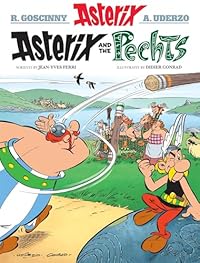Posted in Aberdeen, Architecture at 12:00 on 20 March 2023
On our trip up north last August we stayed in a hotel in Dyce.
We knew there were ancient symbol stones near there but had never visited them.
They are in St Fergus’s Church, the old Dyce Parish Church but now a fair bit out of town. The church sits on a hilltop beside a bend in the river Don, a lovely situation:-

The church was built in the 13th century but the symbol stones date from the 800s.
Ruins of church:-
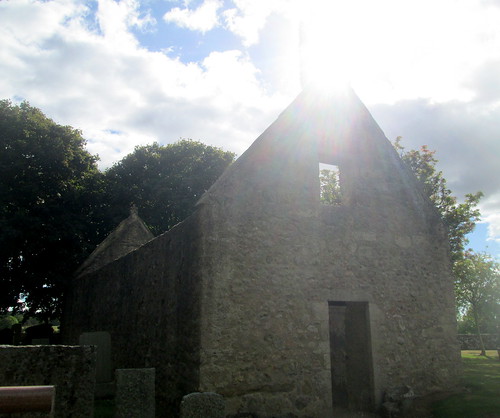
Symbol stones at nearer end of church ruins:-
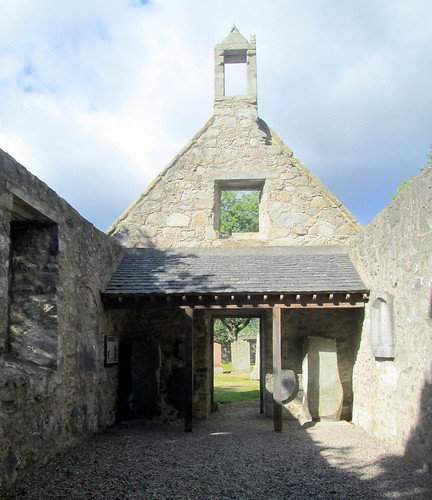
Information Board:-

Symbols:-


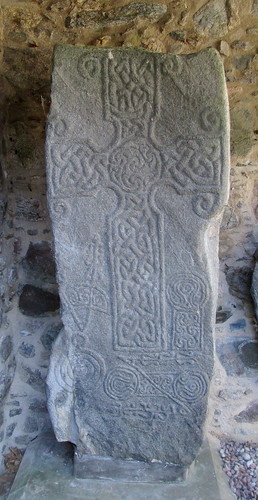
In the church yard we met a man who who was a retired stonemason and had worked on the church years before, so he pointed out things of interest, including the ‘green mannie’ on the corner of the building which you can just see in the photo below, he had actually discovered it when he was repointing the church.
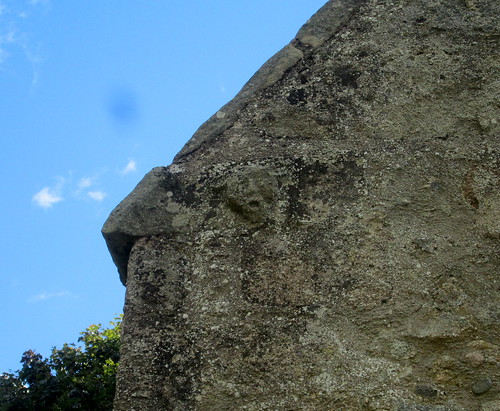
No Comments »
Posted in History, Trips at 12:00 on 3 November 2022
Aberlemno in Angus is a village notable for three large Pictish Symbol Stones located just north of the village.
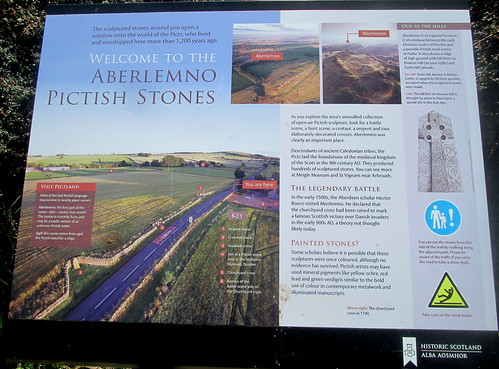

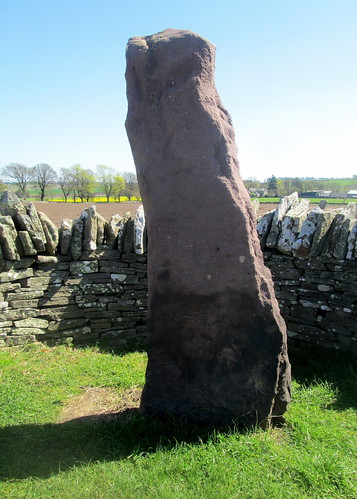

These are respectively, the Serpent Stone:-

The Crescent Stone:-
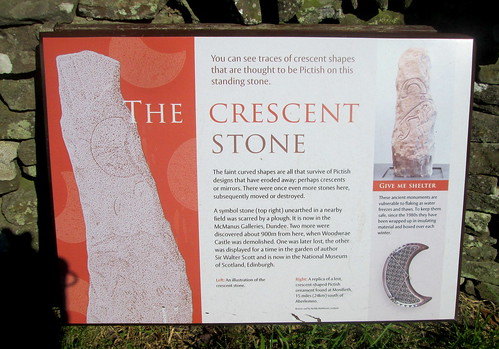
And the Roadside Cross:-

Reverse of the Roadside Cross:-

There’s also a Pictish Stone in the churchyard at Aberlemno:-

Reverse of churchyard stone:-
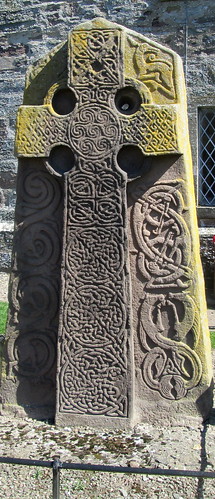
Information Board:-
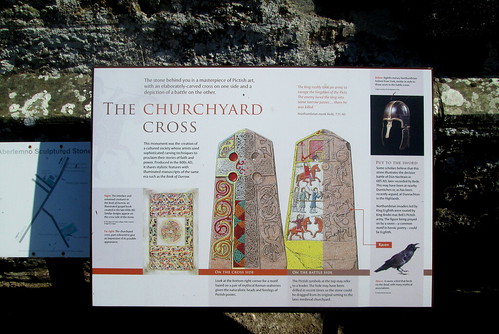
This replica of the churchyard cross is situated at the edge of the car park for the stones:-

No Comments »
Posted in Bridges, History, War Memorials at 20:30 on 21 December 2020
An old joke has it that Perth is the smallest town in Scotland because it only has two inches. The North and South Inches are of course green spaces used for recreational purposes. They both border the River Tay.
We used to park regularly in the South Inch car park when we visited Perth. Nowadays we tend to use elsewhere.
As a result we one day strolled around the south part of the North Inch. A wall separates it from the river and on that wall is a plaque commemorating the men of Perth Co-operative Society who lost their lives in the two World Wars. It is inscribed, “1914 – 1919. To the lasting memory of the employees of the City of Perth Co-operative Society Ltd who fell in the Great War,” plus, “Also in grateful remembrance of those who sacrificed their lives in the Second World War 1939 – 1945,” and, “Their name liveth for evermore.”
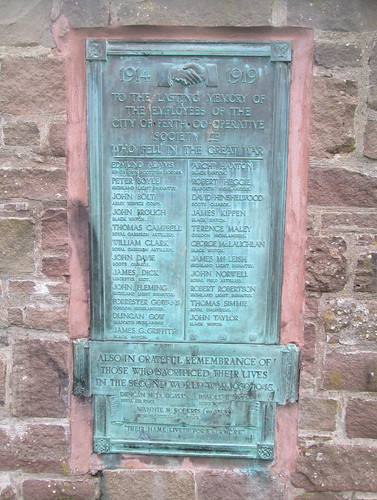
From it there is this view of the river and Perth Bridge:-
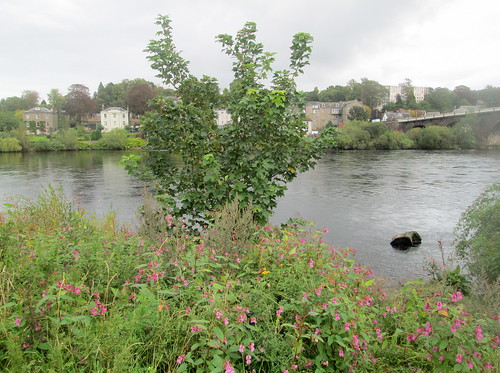
Perth Bridge:-
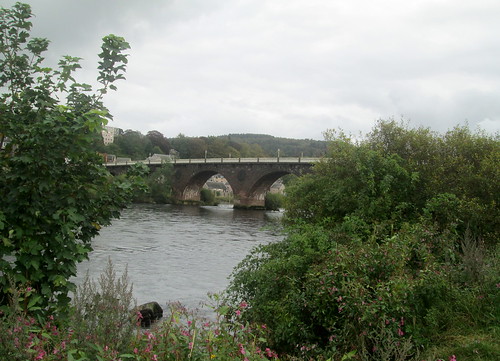
On the same visit we popped into Perth Museum and Art Gallery. Among many other exhibits they have this old Pictish stone found at St Madoes/Inchyra in the Carse of Gowrie, Perth and Kinross.

No Comments »
Posted in Fife at 12:00 on 20 August 2020
Strathmiglo is a village in Fife, in which comedian Ronnie Corbett once had a home. We pass it on a regular basis. The road on which we do that, though, bypasses the main street but the way we come in passes a road named Cash Fues as the land there once belonged to the ancestors of country singer Johnny Cash.
One day last year we took the time to stop for a look round the village itself.
This is the tolbooth, built in 1734:-

View towards East Lomond – the second highest hill in Fife. (The highest is the West Lomond.)

There is a wonderful monkey puzzle tree (araucaria) just off the main street – with the kirk beyond:-

By the entrance to the kirk is a Pictish stone:-
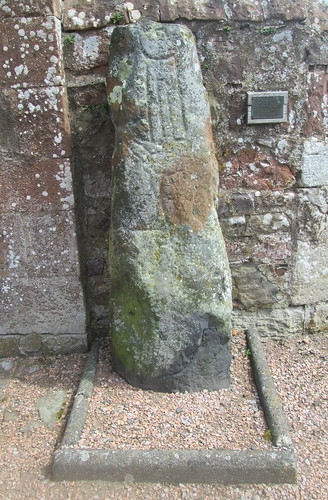
A plaque on the wall beside it has a description:-

No Comments »
Posted in History, Trips at 20:00 on 16 July 2018
Later Norse Houses with 12th century church in background:-
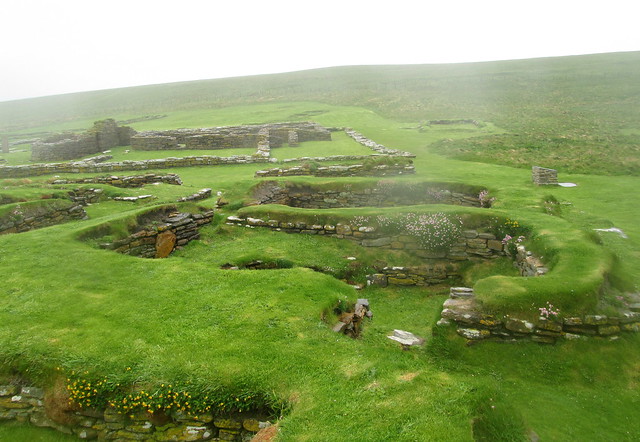
12th century church. (See Pictish stone to left):-
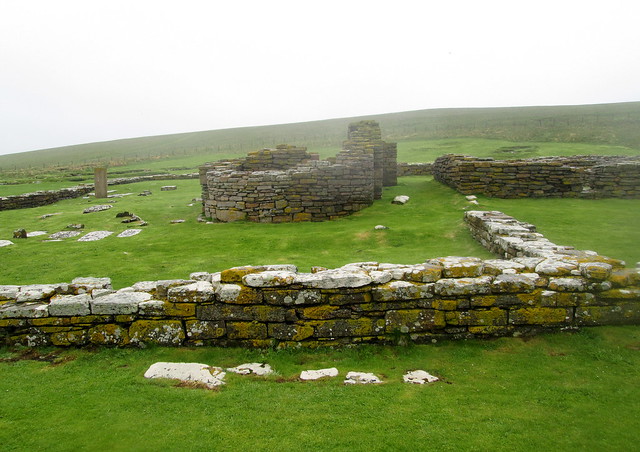
Edge of 12th century church complex:-
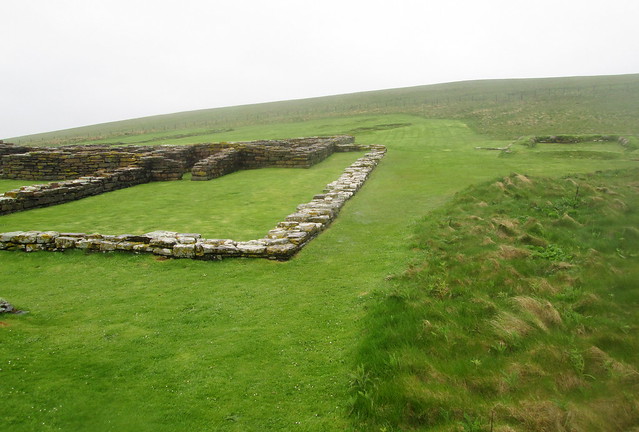
12th century church remains:-
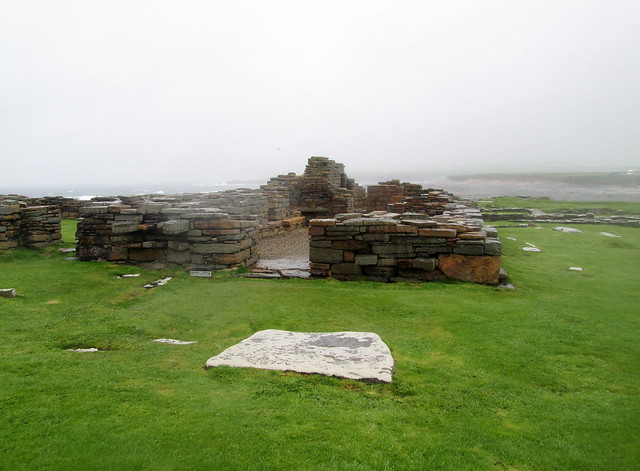
12th century church information board:-
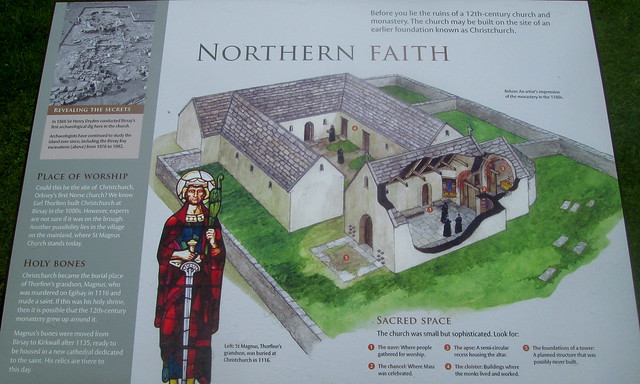
Sunken structure, possibly another Norse house:-
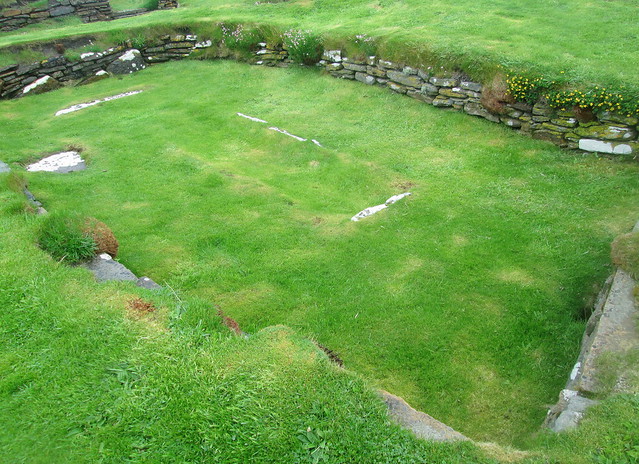
North edge of archæological site, Brough of Birsay:-
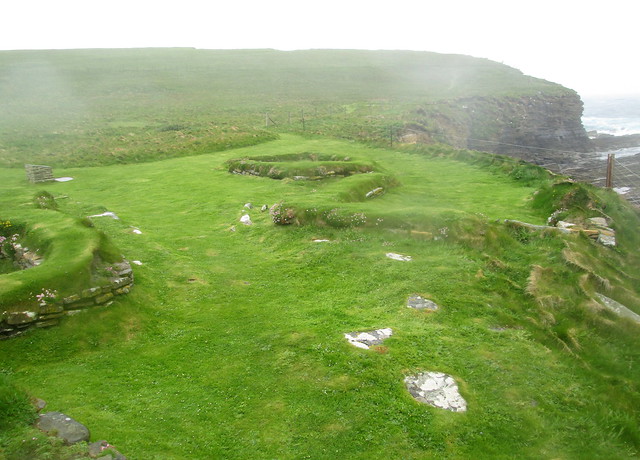
1 Comment »
Posted in Seaside Scenes, Trips at 12:00 on 14 July 2018
The Brough of Birsay is an island just off the north-east coast of mainland Orkney. I blogged here about the causeway you have to cross to access the island.
It is also home to some archæological remains (as well as a Stevenson lighthouse which we didn’t visit.) The weather was fine when we walked across the causeway to the island but while we were there it started to rain and the wind was so strong the rain was coming in horizontally, so discretion prevailed over perseverance. Even so by the time we got back to the car we were thoroughly drookit.
There was some nice geology just where the path from the causeway meets the brough proper.
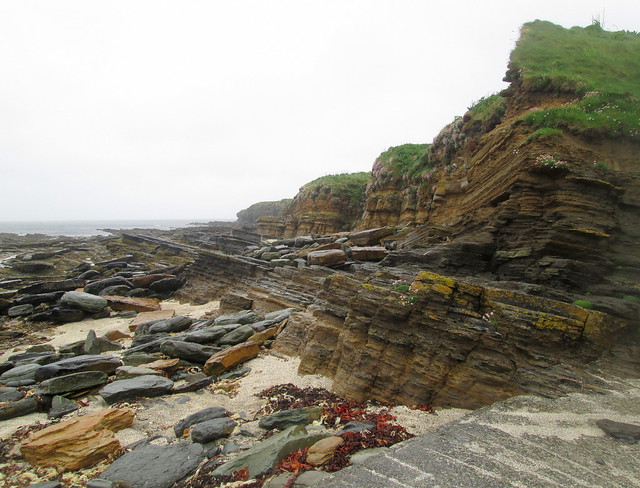
The archæology on the brough comes from three distinct eras. First there was some Pictish occupancy. However this Pictish symbol stone is a replica, unfortunately. (Though there was such a stone found on the brough.)
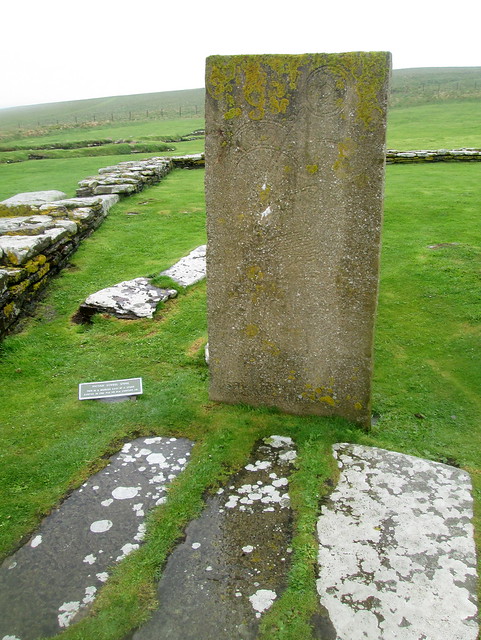
There is a better photograph of the symbol stone on Historic Scotland’s Birsay webpage if you click through the pictures.
As the information board says there was later Norse – in two phases – and ecclesiastical building on the island.
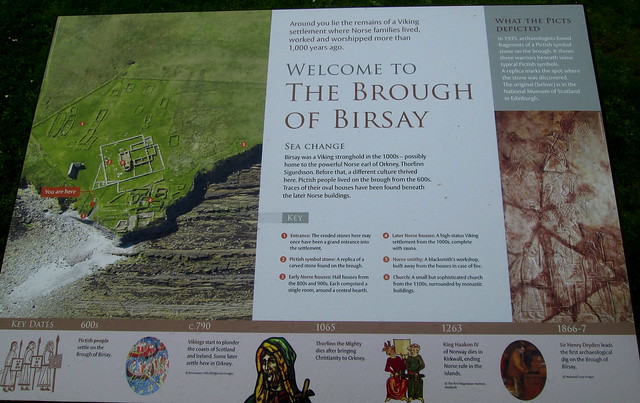
Remains of Norse houses:-
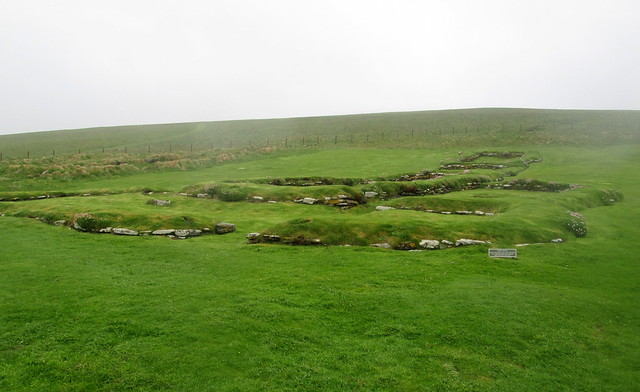
A later Norse house:-
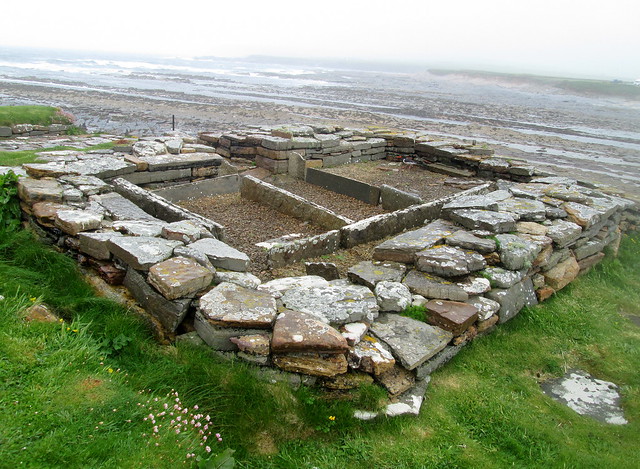
Another later Norse house:-
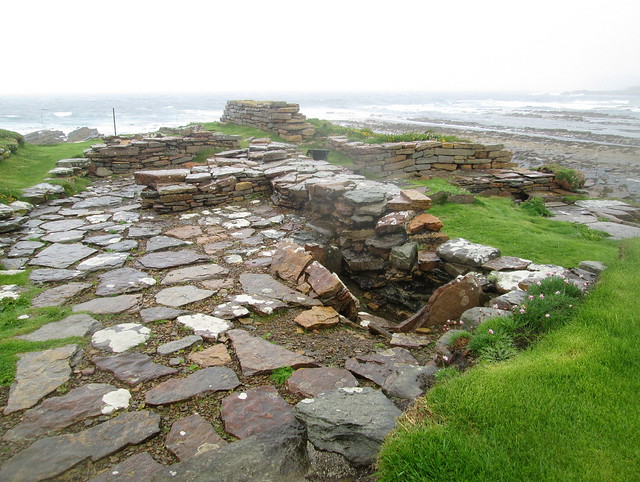
Birsay may have been the home of Thorfinn the Mighty.
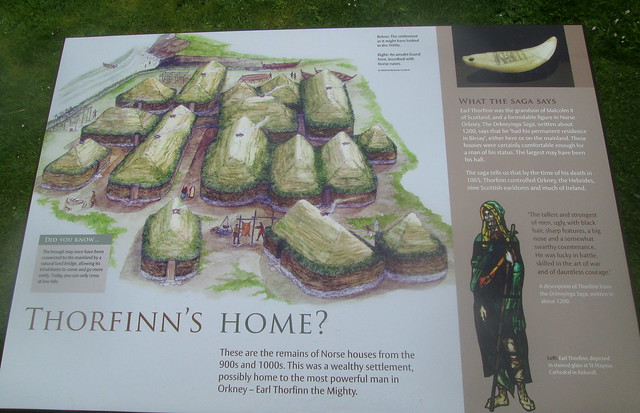
2 Comments »
Posted in History, Museums at 19:54 on 19 January 2017
There is a good wee museum in Abernethy, Perth and Kinross, open Wednesday to Sunday 2pm-5pm from early May to September well worth a visit if you happen to be in the village in the summer months.
The village has other reminders of the past as well as the Tower itself, the graveyard and the War Memorial.
Stone with Pictish inscription (hard by Round Tower):-
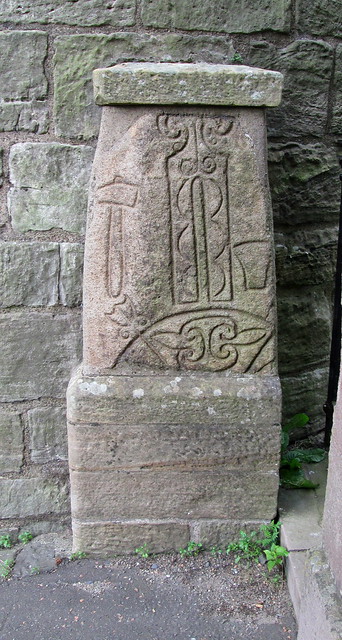
Almost next to the Pictish stone and set into the tower near its base is this manacle. Presumably it was a punishment site of some sort:-
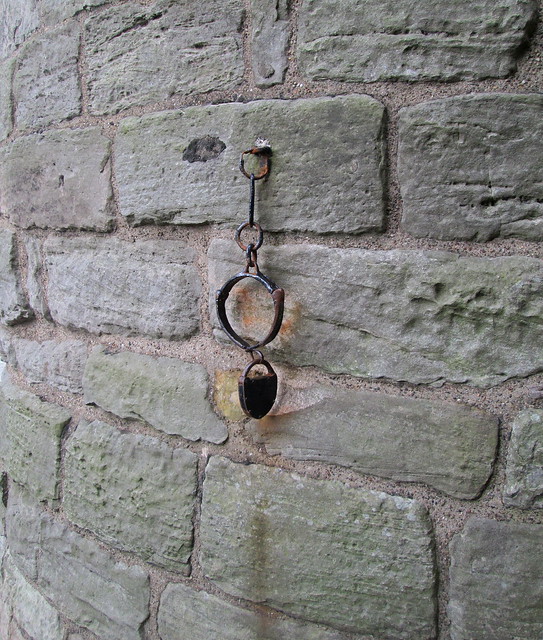
No Comments »
Posted in War Memorials at 20:31 on 16 January 2017
Abernethy is a village in Perth and Kinross. It contains one of only two intact Pictish towers left in Scotland. (The other is in Brechin.)
Tower from street:-
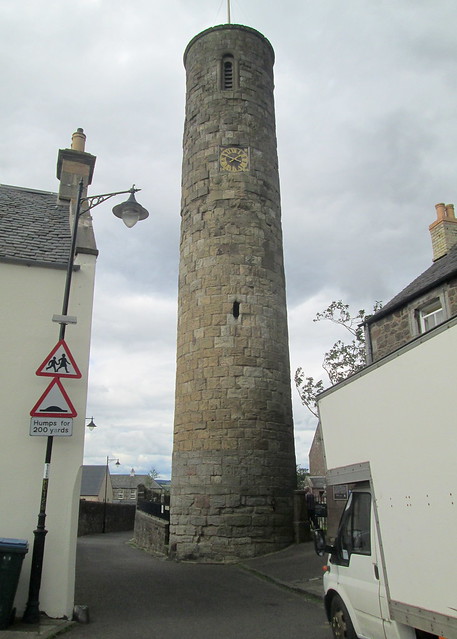
A view from the tower. Graveyard just below:-

Tower from graveyard:-
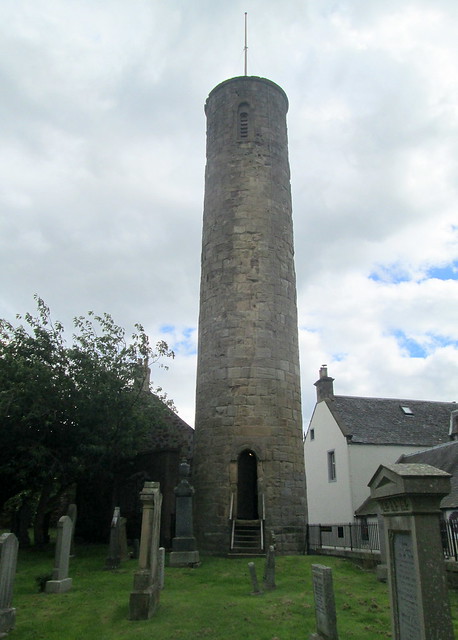
War Memorial from Tower:-
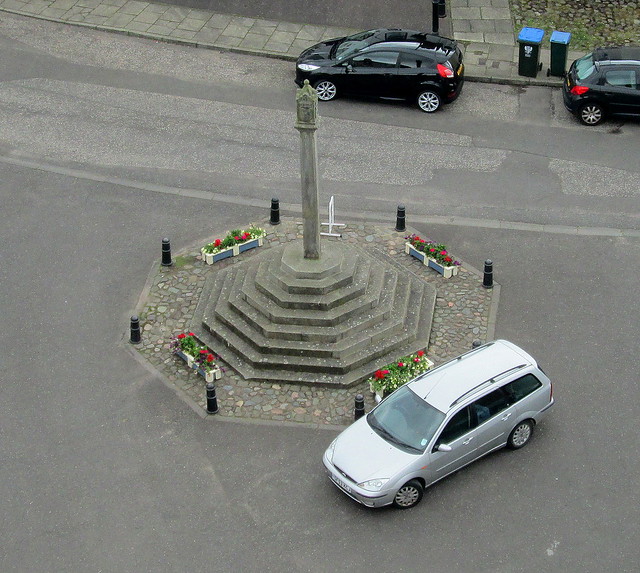
War Memorial from ground level:-
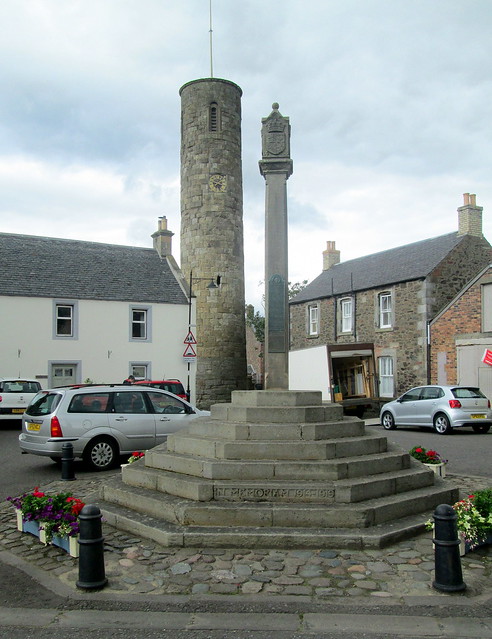
Original inscription carved into plinth:-
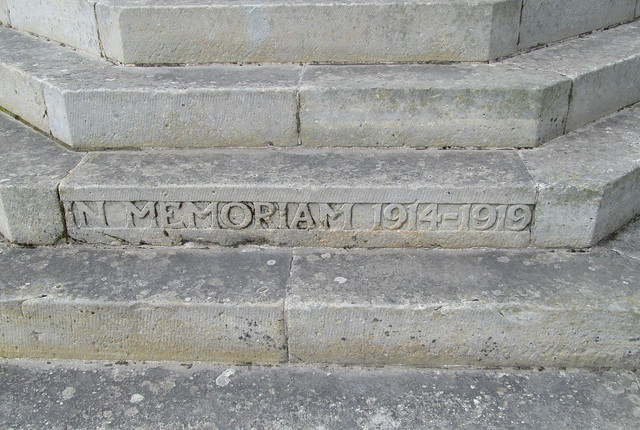
War memorial names. Great War names above, 1939-45 below:-
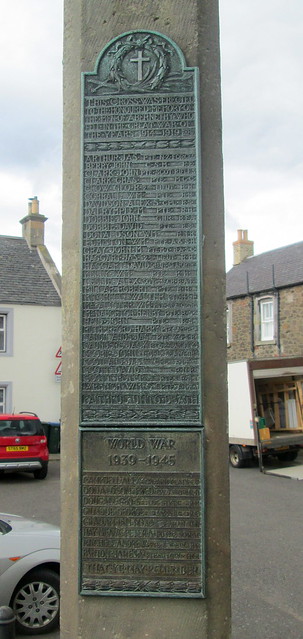
No Comments »
Posted in Reading Reviewed at 12:00 on 2 February 2016
Scrievit by Jean-Yves Ferri. Illustraitit by Didier Conrad. Translaitit by Matthew Fitt.
Dalen Alba and Itchy Coo, 2013, 48 p. Originally published as Astérix et les Pictes, 2013, by Les Éditions Albert René.
A bit of fun. This is the Scots version of Asterix and the Picts the first Asterix book not to be written by either René Goscinny or his original illustrator Albert Uderzo. Here Asterix and Obelix retain their familiar names but the “clachan warlock” is rendered not as Getafix but instead Kensawthetrix, we also have Heidbummerix for the chief, Gieitbiglix, plus the inspired name Magonaglix for the bard; but my favourite of these is actually the fish seller, Minginhaddix.
The story starts when an ice-bound, kilted body washes up near Asterix’s clachan. This turns out to be MacHoolet who when thawed out cannot speak at first but nevertheless is a big hit with the local ladies. When MacHoolet, who Tourette’s-like, breaks out in anachronistic song every so often (Mak me wanna shout, Auld Lang Syne, I’ll tak the high road, Boom-Bang-a-Bang, I wid walk 500 miles, I feel it in my fingirs, Ally Bally) and utters the impeccably Doric phrase “foosyerdoos”, finally manages to communicate his origins to the village they set off to take him home and reunite him with his love Camomilla, whom the Pictish chief Macrammie (a nice double pun here on textile working and the Scots for a disputatious contretemps) wants for his own. En route they encounter Nessie’s ancestor Nechtan. They arrive in time to interrupt – with Camomilla’s help – a gathering of the clans to elect a new king (Muirlain Pechts, Plookie Pechts, Joco Pechts, Fattygus Pechts, Pechts fae the wids, Pechts fae the yella watter, White Pechts) as well as to send the Romans home to think again. When MacHoolet calls for new rules of inheritance there is a sly reference to the proportional representation element of the Scottish Parliament’s make-up, ‘we could tak names fae a regional leet’. There are other contemporary references such as ‘Vote Aye. Vote Naw. Better Thegither. It’s Pechtland’s Peat.’ Great stuff: but I doubt non-Scots would make much of it.
Though it is one of the spellings in Scots of that ancient people’s name and Matthew Fitt does make the pun during his translation I would have preferred an alternative (Picht? Peht?) to Pechts. It makes them sound as if they’re out of breath.
No Comments »
Posted in Curiosities, Fife, War Memorials at 13:00 on 3 March 2012
There are three towns/villages in Fife with Wemyss in their names.
I featured West Wemyss on 29/2/12. It lies down on the coast off the coast road which leads east.
Climbing back up the hill out of West Wemyss and turning eastwards at the road junction you immediately enter Coaltown of Wemyss.
Passing through the village soon takes you into East Wemyss.
Famous accordionist and band leader Jimmy Shand was born here. There is a memorial to him near the foreshore.
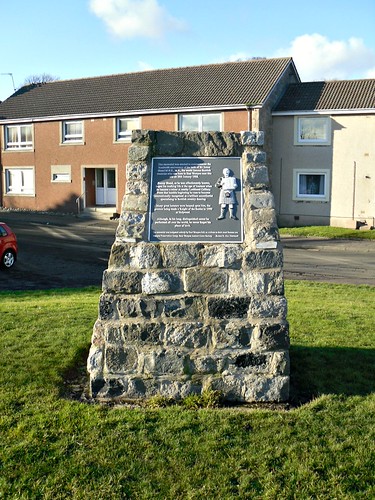
Jimmy is more associated with another Fife village, Auchtermuchty, where his family moved soon after his birth. His signature tune was The Bluebell Polka, a hit in 1955. The video below was filmed in 1994. He was knighted in 1999.
Jimmy Shand: The Bluebell Polka
East Wemyss is known for a series of caves some of which have carvings which date back to Pictish times. The TV series Time Team investigated the caves in 2005.
The East Wemyss War Memorial is nicely set on a corner. The WW2 names are on the lower plaque. There is also one name for a post-World War conflict.
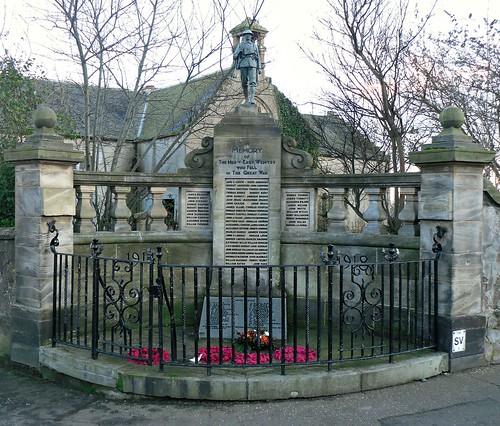
We somehow missed the Coaltown of Wemyss war memorial on the day the above photos were taken despite driving through it twice in broad daylight. Curiously on the next Tuesday as I was returning home from the East Fife game in the dark I did see it; on the gable-end of a building on the main street. So, next time.
No Comments »




















































